2010 Tour trends
An in-depth look at the trends and tactics that excelled in 2010

Each year 150 of the world’s best bass anglers suit up to fish the Walmart FLW Tour. To find success on the water each day they reach deep into the wells of their fishing expertise. Along the way, they wring out every last drop of angling innovation to match the challenges posed by a variety of differing lakes and conditions. And the tactics and techniques they apply to catch winning stringers provide information that benefits all bass fishermen, no matter their skill level.
Whether it involves something as groundbreaking as a new lure or something as simple as a new knot, much of what shapes bass fishing itself comes from the trends developed on the FLW Tour. With that in mind, here’s a look back to see what can be learned from the 2010 FLW Tour season and how it might be employed in 2011.
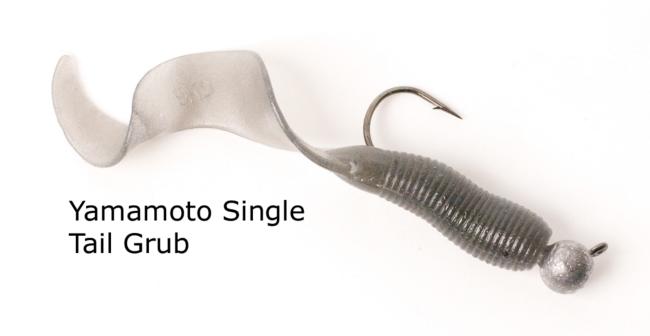 Cold-water grubbing
Cold-water grubbing
The tour season started with a throwback technique resurrected on the frigid waters of Missouri’s Table Rock Lake in early March. With water temperatures in the upper 30s during practice, local favorite Scott Suggs of Bryant, Ark., made a prophetic statement before the event began.
“This tournament is going to be won swimming a grub,” the Folgers pro told the media. “It’s an old-school Ozarks technique, and it works the best when the water is darn near hard.
“The lower the water temperature is here in the Ozarks, the more subtle a bait needs to be. A swimbait has just too much action for cold water. A grub has a much more subtle swimming action.”
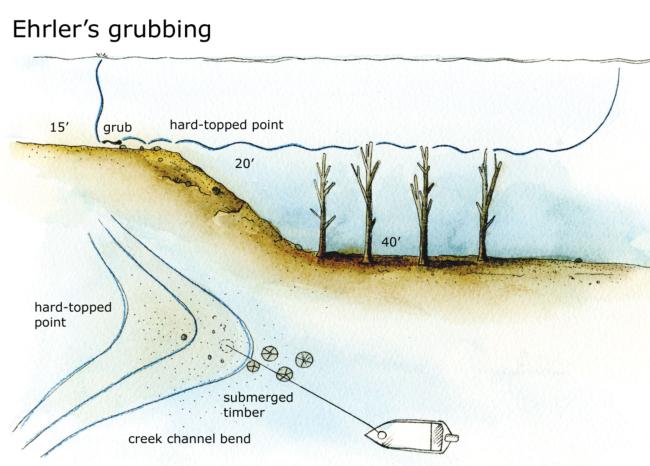
Before the 2010 event began, Suggs shared his Ozark grubbing philosophy with several fellow pros, including National Guard pro Brent Ehrler of Redlands, Calif. Four days later, Ehrler won the event by a 13-pound margin – and he did most of his damage with a 5-inch Yamamoto Single Tail Grub (smoke/shad color) rigged on a 1/4-ounce jighead.
Ehrler found the fishing spot of a lifetime at Table Rock: a bare, hard-topped point in the bend of a creek that fell off abruptly into a timber-filled valley. It came complete with hoards of plump bass suspended over the deep trees, just off the break.
He fished the magical spot by casting the grub to the top of the point, letting it hit bottom in about 15 feet and swimming it out over the treetops in deeper water. Ehrler estimates the grub was swimming down to about 20 to 25 feet whenever the bites would occur.
“That was the first time I swam a grub that deep for suspended fish,” Ehrler says. “Part of it was just the spot itself – it had so many fish on it. I did catch some on other baits during the tournament, but I found the spot with a grub and that was the bait they wanted.”
Skipping perfection
The Lake Norman event held in late March was a dock-skipping clinic conducted by two of the best dock skippers in the business: Damiki pro Bryan Thrift of Shelby, N.C., and Andy Montgomery of Blacksburg, S.C.
Thrift and Montgomery perfected their dock-skipping prowess on Norman, and the secrets of their craft came to light when Thrift won the event and Montgomery finished third.
Watching either of these skipping masters “slide” a jig across the surface, 40 feet up under a floating dock that has just a 6-inch by 6-inch access point is truly a sight to behold. It’s a technique that can’t be taught in any way other than by going out and making thousands of casts. Now that these two can accomplish it regularly, it’s a part of their year-round fishing arsenal.
“If a lake has docks on it, I’m always on the lookout for a good skipping bite,” Thrift says. “The prespawn, like we had at Norman, is a good time to do it because bass will stage on docks before moving on beds.”
The first lesson to learn if you want to master dock skipping is to use the “perfect” dock-skipping lure, 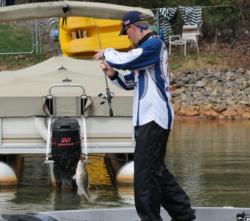 which both Thrift and Montgomery used: a 1/2-ounce Shooter Jig teamed with a large soft-plastic trailer that helps “float” the lure during the skip.
which both Thrift and Montgomery used: a 1/2-ounce Shooter Jig teamed with a large soft-plastic trailer that helps “float” the lure during the skip.
The biggest key to a Shooter Jig is the hand-tied skirt, which holds the skirt strands firmly in place during the jarring skipping process, something not possible with rubber skirt collars.
“Rubber band collars slide down the shank, mess up your skip-cast and cause backlashes,” Montgomery says. “Plus, fixing a skirt after every cast is a waste of time. When the right skip-cast presents itself, you have to be ready to cast, and not have to stop to fix skirt strands. The difference between a good hand-tied jig and a rubber collar is night-and-day.”
Both skipping experts employ 20-pound-test fluorocarbon. They admit that fluorocarbon is stiffer and more wiry than monofilament for skip-casting, but both believe fluorocarbon garners more bites and is more durable around pilings, crossties and cables.
As for rods, Thrift likes a 6-foot, 9-inch medium-heavy rod for skipping, and Montgomery uses a 7-foot medium-heavy action rod.
Sighting smallmouths – sort of
At the Fort Loudoun-Tellico Lakes event in late April, pro Glenn Browne of Ocala, Fla., ran away with the win by staying true to his favorite game of flipping shallow cover for largemouths.
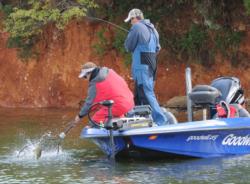 And while green fish dominated the winner’s circle, it was the second- and third-place positions that revealed a new trend on east Tennessee impoundments: sight-fishing for smallmouths.
And while green fish dominated the winner’s circle, it was the second- and third-place positions that revealed a new trend on east Tennessee impoundments: sight-fishing for smallmouths.
Sight-fishing is not common on Tennessee Valley Authority impoundments because the water is generally murky, especially in deeper water where smallmouths are likely to spawn. But pro Chad Grigsby of Maple Grove, Minn., put his sight-fishing expertise to work at Fort Loudoun to do what many thought could not be done: catch legal-sized (18-inch minimum) smallmouths several days in a row. In the end, Grigsby used his highly trained eyes to score a second-place finish. However, he did it with a sight-fishing twist.
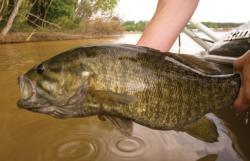
The Goodwill pro notes that the water on Fort Loudoun is not quite clear enough to see the fish, but it’s certainly clear enough to find the right cover and bottom smallmouths prefer.
“Certain banks on the main lake at Loudoun remind me of the pea gravel banks smallmouths spawn on back home,” Grigsby says. “During practice we had a couple of calm, sunny days where I could see down to 4 or 5 feet, and that’s all I needed to spot rocks, stumps or logs in that pea gravel suitable for a smallmouth to build a nest near.”
Sometimes Grigsby would detect a glimpse of a bronzeback as it chased a bluegill off the nest, which gave away the bed’s location. However, most of his catches came when he cast to individual pieces of cover. If his line started “swimming off,” he set the hook. Once that fish was in he went about perforating the area with a shaky head or drop-shot.
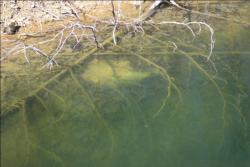
“Usually, if you can find one bedding smallmouth, there are several others bedding right near it,” he says. “Back home, it’s not uncommon to find a dozen big smallmouth beds packed into one tiny area, and that’s the same way it was on Loudoun. If one would give itself away, I could find others by fishing tight in that area.”
Stalking the wolf packs
The Lake Ouachita event held in late May shined light on a springtime pattern when small groups of hungry bass roam the shorelines in “wolf packs.”
“We catch wolf-pack bass from late spring through the fall, especially around full moons when bream beds are common,” says Jacob Powroznik of Prince George, Va., who regularly fishes such lakes as Buggs Island, Gaston, Wylie and Murray. “It’s a visual form of fishing, and the whole trick is spotting a wolf pack and presenting a lure to the fish before they see you. The biggest problem with these shallow packs of bass is that they are very wary – once they see you, they clam up. It can be frustrating, too. You’ll see 20 pounds of bass swimming down the bank and they won’t eat.”
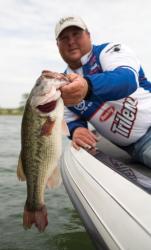
Even though such bass are roamers, they usually patrol a “home range,” such as an area with several pockets and adjoining points. They are especially prevalent around active bream beds.
When Powroznik arrived at a flooded Lake Ouachita for the event, during the peak of the bream spawn, it didn’t take him long to find bream beds and wolf-pack bass. He tipped Castrol pro David Dudley of Lynchburg, Va., off to the pattern and the two pros went to work targeting the wolf-pack bite: Dudley finished third and Powroznik finished sixth. Meanwhile, it was Ehrler who once again found victory after he too noticed packs of roving bass.
The primary tactic that Powroznik and Dudley centered on was skipping wacky-rigged worms and Yamamoto Senkos to bream beds and point bushes. Ehrler relied on two topwaters: a Lucky Craft Gunfish 115 and a baby bream Brian’s Bees Prop Bee #2.
All three pros agreed that making long casts was crucial, and that the lure had to make some kind of noise to get the bass’ attention. Even though Dudley was throwing a wacky rig, he always used a skip-cast to present the lure, even if there wasn’t necessarily anything to skip under where he was fishing.
“I think that skipping noise across the surface really excites them,” Dudley says. “I’m sure a topwater would have worked where I was fishing, too, but I liked having the bait fall after the skip.”
Fishing without moving
If anything can be learned from the Lake Guntersville event, it’s not so much a technique, lure or rig as a lesson in committing to a fishing strategy, even when it goes against the consensus.
Case in point: Most people expected the tournament to be won off of a handful of spots. And for several of the top finishers at Guntersville, that was precisely the case. For the winner, Brent Long of 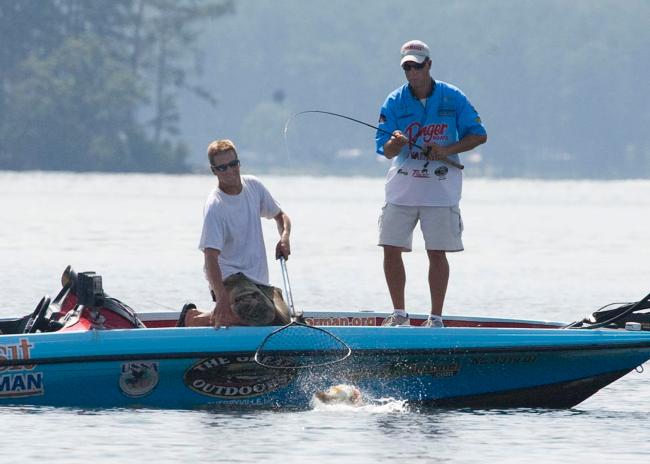 Cornelius, N.C., it was just the opposite. At least 90 percent of his winning fish came off of one spot, a place where Long was able to commit himself to either winning or losing (see sidebar).
Cornelius, N.C., it was just the opposite. At least 90 percent of his winning fish came off of one spot, a place where Long was able to commit himself to either winning or losing (see sidebar).
The biggest advantage to this style is the ability to control fishing pressure. Ironically, fishing one stop all day usually involves not fishing the sweet spot for long periods of time in an effort to let it rest and replenish.
“When you’re fishing and guarding one spot all day, the only fishing pressure the place receives is your own, and therefore you can control it,” Long says. “I would intentionally avoid the sweet spot for up to two hours just to let it rest. It might seem like a waste of fishing time to cast the other way while letting a spot rest, but at least I knew the spot was untouched during that time.”
Another advantage in getting to know one area so well is recognizing the small condition changes or feeding windows when bass are most active.
“The biggest unknown you fight mentally when jumping from spot to spot is wondering whether someone else has just fished there or if the fish have already fed,” Long says. “When you’ve spent all day babysitting a place, you know exactly what has happened, and that peace of mind can produce a lot of confidence.”
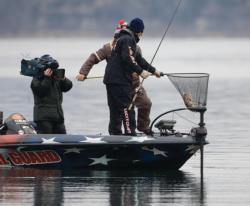 One-spot jackpots
One-spot jackpots
It might seem unbelievable, but more than half of the 2010 FLW Tour events were won on single spots. In three of the five events, the eventual winner essentially fished the same exact spot for four days in a row for victory.
At Table Rock, National Guard pro Brent Ehrler’s magical creek bend yielded 20 bass for 69 pounds, 11 ounces. At Fort Loudoun-Tellico, pro Glenn Browne seined the same football field-sized backwater for four days to accumulate 59-13. And at Lake Guntersville, pro Brent Long of Cornelius, N.C., tapped one tiny ridge about the size of a truck and boat for most of his 95-7 winning total.
Granted, in each case, the victors caught a couple of keepers elsewhere. But in all three instances, 90 percent or more of the winning bass came off of one spot.
All three winners concur that two criteria are needed to pull off such a feat: You must have such a spot all to yourself, and the fish must replenish on the spot every day.